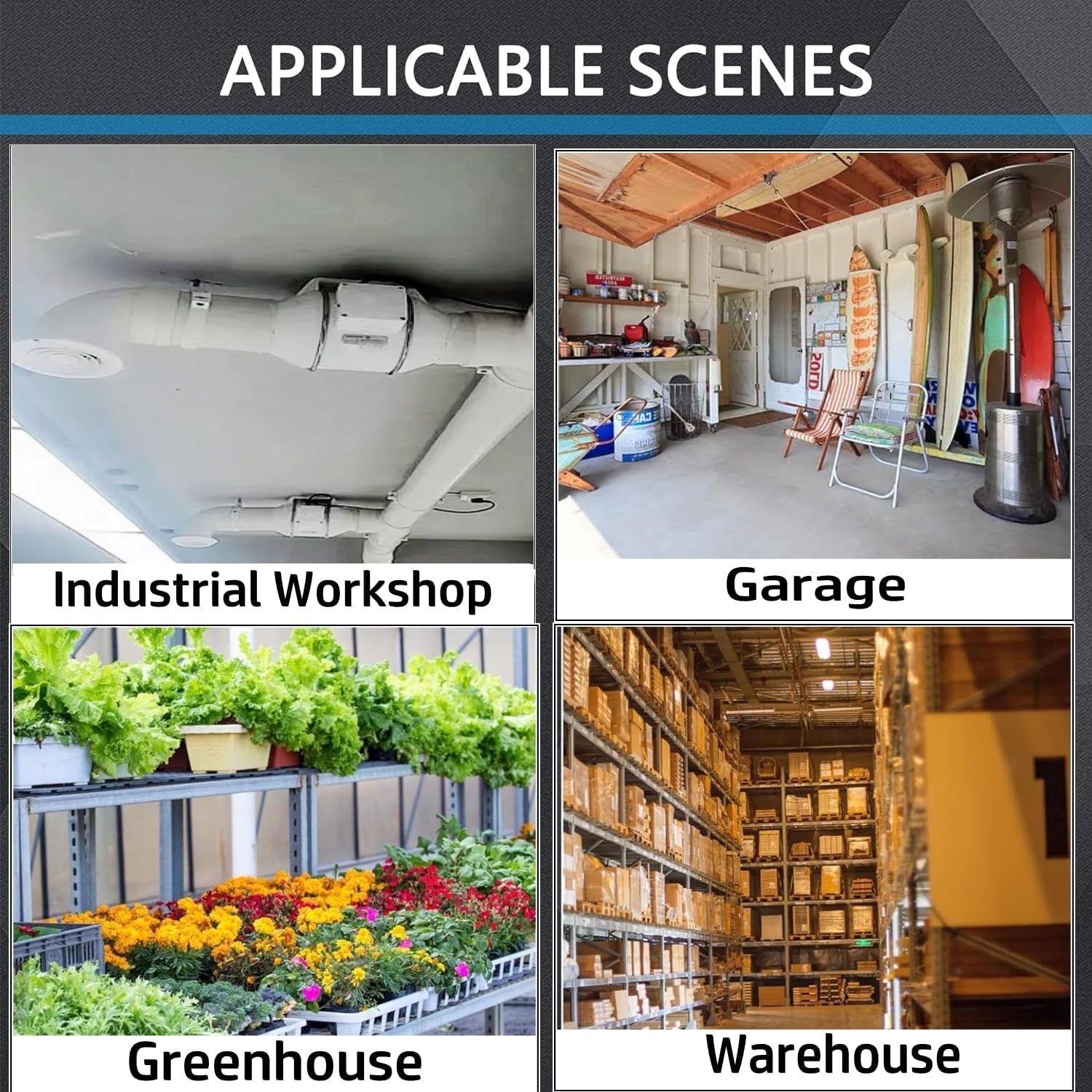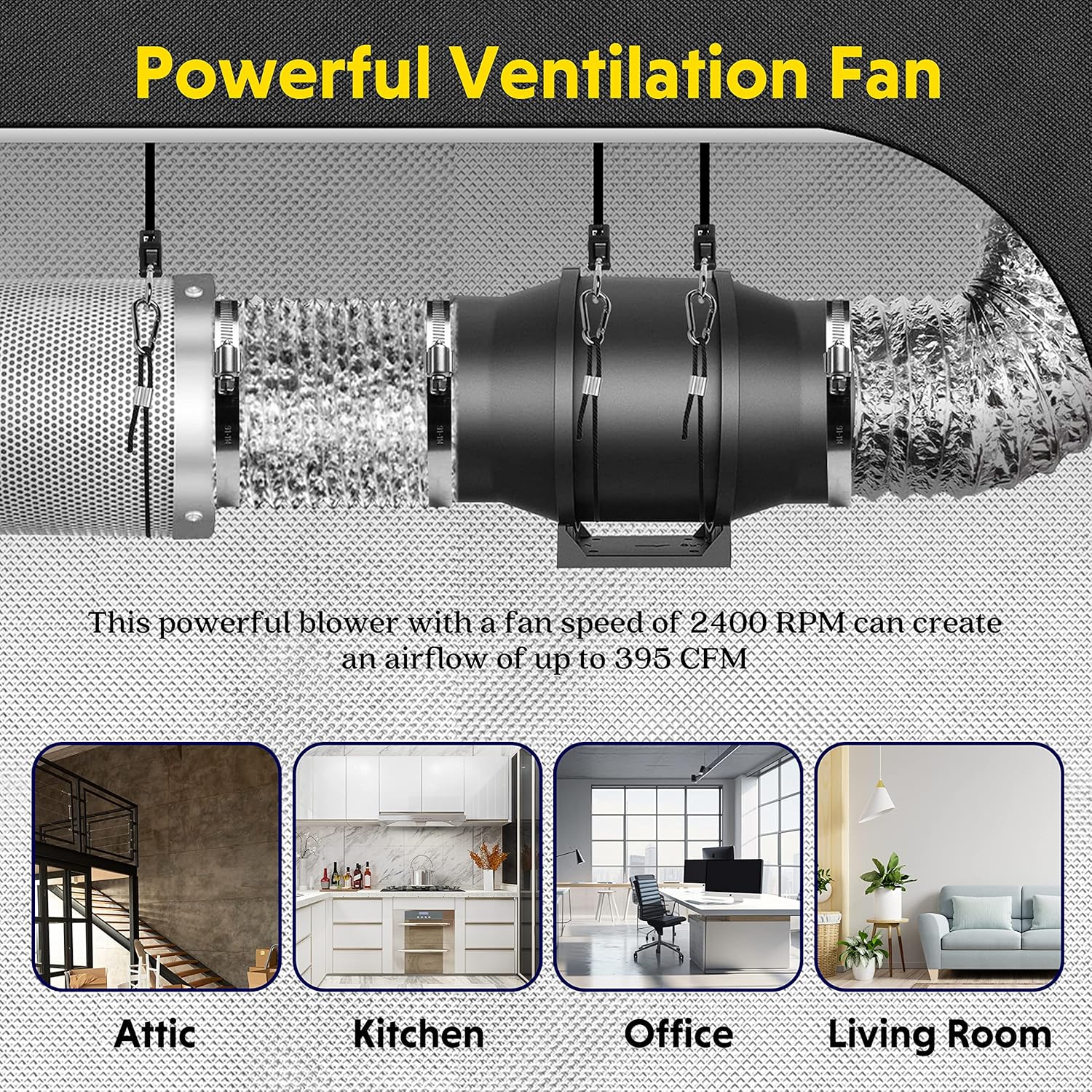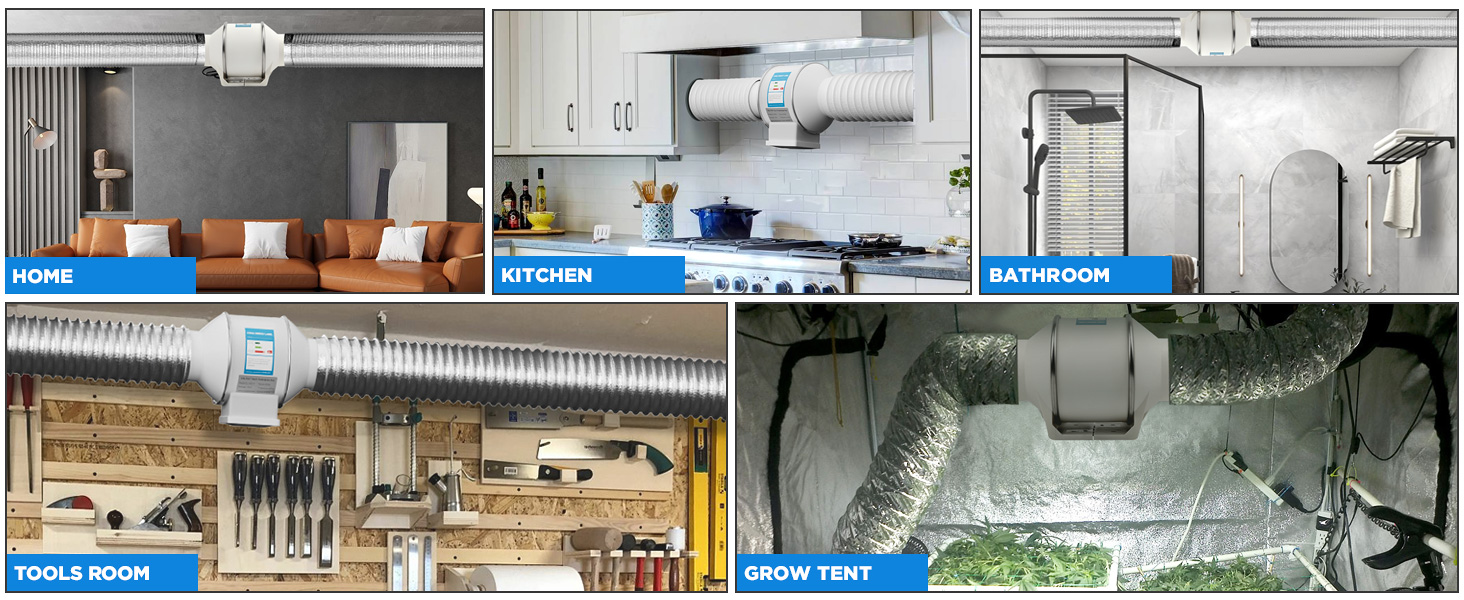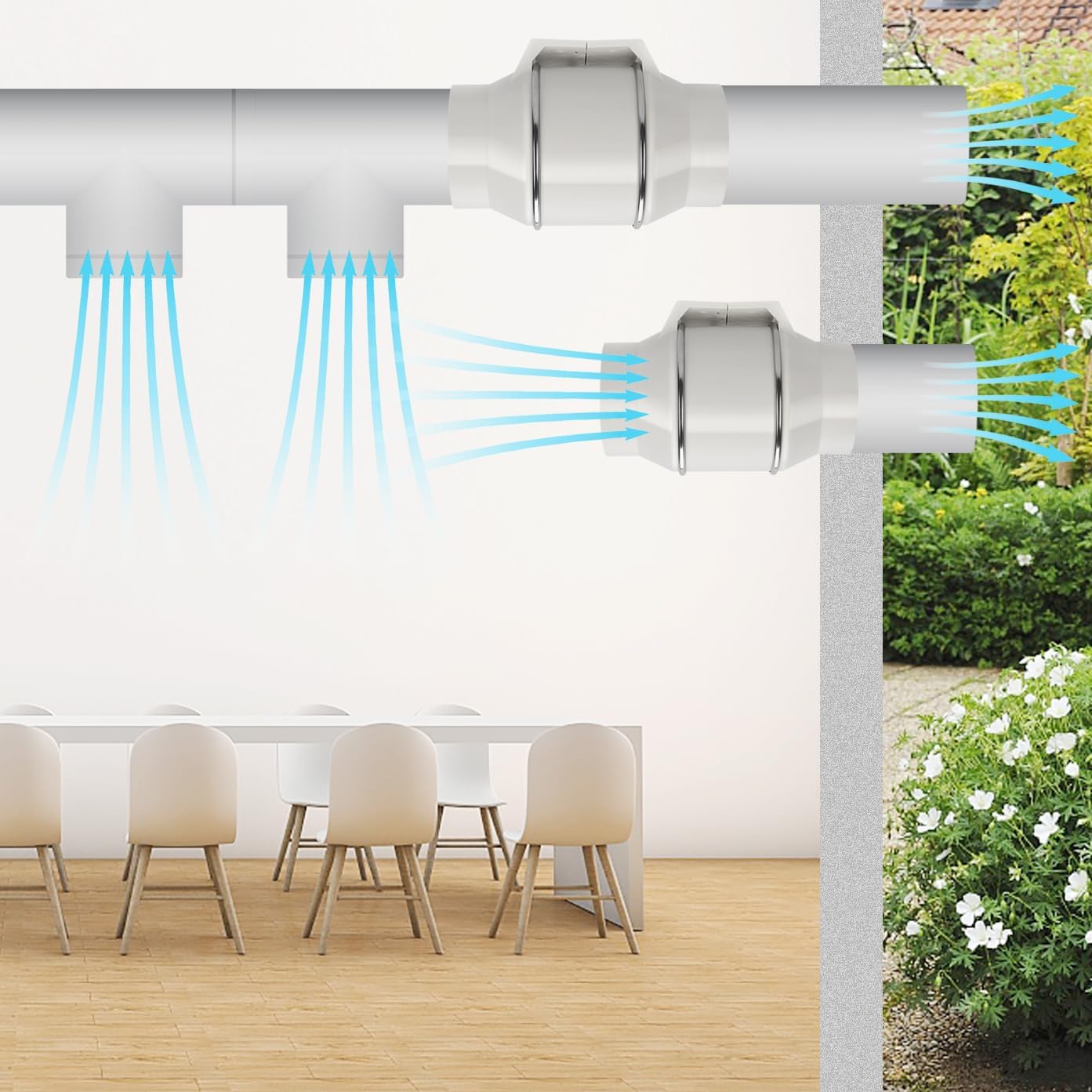Understand the needs of quiet air movement
In modern living and working environments, effective ventilation is crucial, but should not come at the expense of peace and tranquility. In the absence of invasive background noise, the need for improved air quality has led to significant advances in ventilation technology, while silent inline tube fans emerge as the primary solution. These fans are designed to operate carefully in the ducts to maintain a comfortable and healthy atmosphere. Unlike their predecessors who often announce existence with unique buzz or roar, today’s innovation focuses on providing minimal sound output, changing the way we approach air circulation in residential, commercial and professional environments.
Silent efficiency and standard performance: core difference
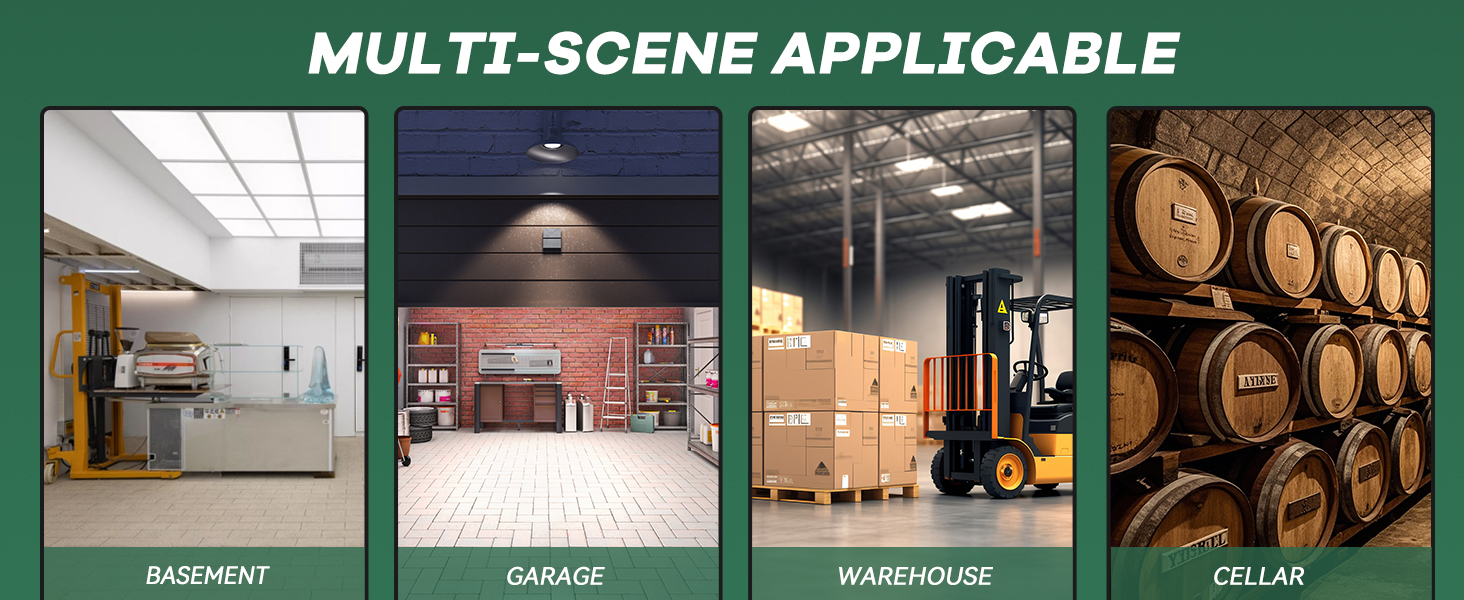
A key comparison point in the duct-based air motion world is the dedicated quiet fan and the standard inline conduit fan. Standard models traditionally prioritize air flow and pressure, sometimes overlooking the generated noise. In contrast, the silent inline tube fan incorporates specific design elements to minimize operant sound. This can include aerodynamic-optimized fan blades, high-quality motors with smooth bearings, mounts on buck mounts, and even specially designed sleeves that absorb or redirect noise. While a standard inline conduit fan may be suitable for industrial areas where noise is not concerned, the benefits of a quiet conduit fan for a house, office or planting tent are undeniable, creating a quieter, more productive environment without sacrificing air exchange efficiency.
Airflow power and noise: High CFM pipe fan dilemma
When a large amount of air exchange is required, a high CFM tube fan (cubic feet per minute) is required. Historically, getting high CFM often means accepting higher noise levels. The challenge for manufacturers is a challenge for engineers, and these fans can powerfully move a lot of air while still operating quietly. This is where really innovative in modern ventilation. Now, some high CFM pipe fan models utilize advanced motion technology and sophisticated blade designs that reduce turbulence, which is the main source of noise. This means you don't have to always choose between strong ventilation and quiet space. The comparison here is not only related to the original force and silence, but also involves engineering complexity that allows coexistence, providing a powerful solution for larger spaces or in the absence of the noise pollution of associated older, refined units.
Application Questions: Residential Quietness and Business Requirements
Ventilation requirements between residential and commercial spaces may vary greatly, thus prioritizing. In a house, a quiet fan is often crucial for spaces like bedrooms, living areas, and home offices. Here, even a slight continuous noise can be destructive. For commercial duct fans, especially in larger facilities such as warehouses, kitchens or industrial workshops, the main focus may be durability, high-altitude exchange rates and ability to handle pollutants. However, demand for a quiet business environment is growing, especially in a business that is geared to clients such as clients or offices. As a result, modern commercial duct fans increasingly use noise reduction, blurring lines and providing employees and customers with a more comfortable experience without compromising the robust performance required by these settings.
Size and Design: Small inline fan and professional blower
Another critical comparison involves physical size and specific types of fans, such as small inline fans and larger units or inline blowers. Small inline tube fans are usually ideal for targeted ventilation in tight spaces such as bathrooms, small planting tents, or AV closets. Their compact size may lead to quieter operation, although quality remains critical, thanks to the lower motor and smaller blades. In contrast, a full-house system or larger room requires a larger inline fan. Then there is an inline blower, usually a centrifugal design. These usually produce higher static pressures compared to axial fans of similar sizes, making them suitable for longer or more complex pipeline operations. While some blowers are designed to be inherently noisy because of how they move the air, they are also quieting these powerful units to ensure they can be integrated into noise-sensitive applications where high pressure is a must.
Choose the ideal inline management solution
Choosing a right inner line tube fan involves a careful comparison of these aspects: the required noise level, the required airflow (CFM), the type of application (residential, commercial or professional), and the details of the installation, such as pipe size and length. Whether you prioritize the operation of advanced inline tube fans that provide your home with premium silent inline fans, whether the sheer power of a high CFM tube fans is required for the seminar, or the specialized performance of an inline blower in a unique setup, understand that these comparisons are key. Companies that prioritize innovative designs and flexible product lines offer a range of solutions to ensure efficient and proper quiet air management can be achieved in almost any situation. Ultimately, the best choice can balance performance with acoustic comfort, thereby improving the overall quality of the indoor environment.

